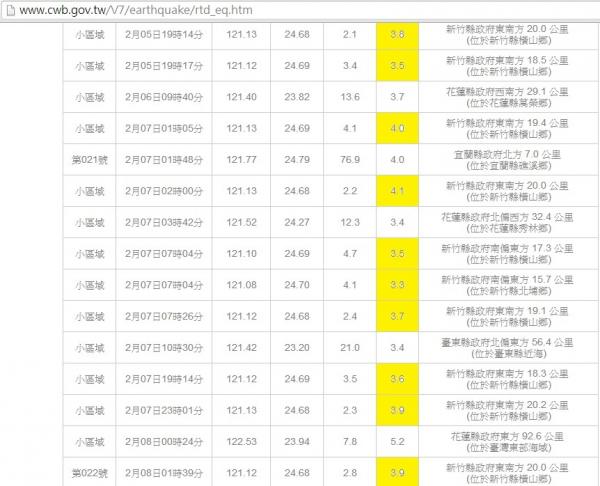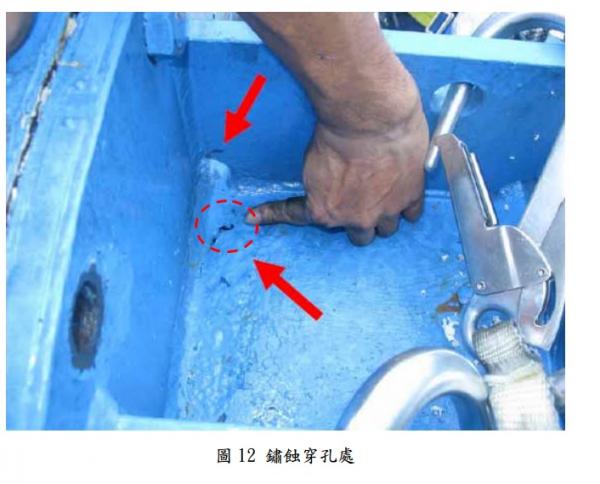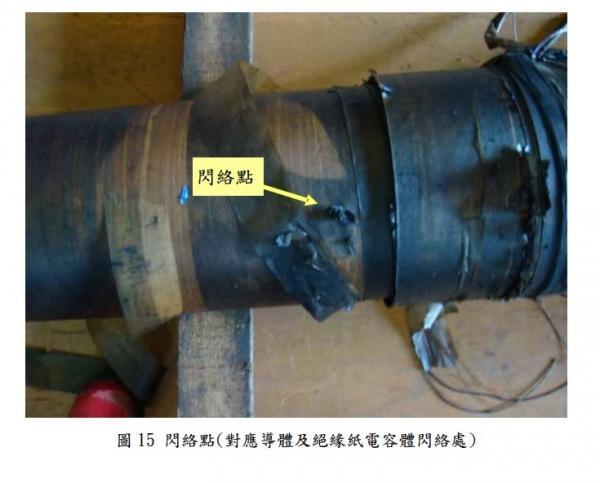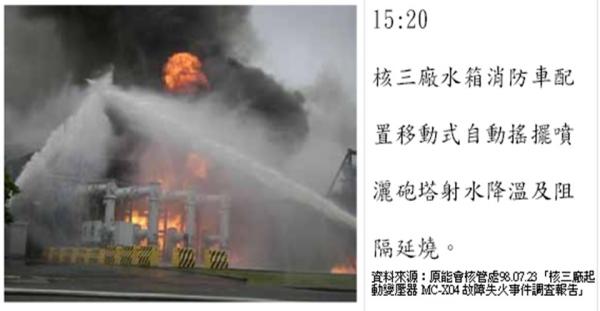From the 5th to 8th of this month, 10 consecutive earthquakes occurred in Hsinchu[1] , with academics not ruling out the possibility of these being foreshocks of an even bigger earthquake[2]. In the wee hours of the 12th, an earthquake measuring 4.0 on the Richter scale occurred in Shihlin District, Taipei City[3] , and on the very same evening, an earthquake measuring 7.3 on the Richter scale occurred in Xinjiang, China.[4]As the earth continues to rumble, the continued presence of nuclear power plants no doubt makes people uneasy.
Riding on the wave of the earthquake, the Ministry of Interior actively promoted “disaster-prevention urban renewal”[5]. However, as the government continues to push for the “renewal” of old houses that are over 30 years old on one hand, they are planning to extend the operations of equally old and decaying nuclear power plants on the other. This makes it almost seem like these old houses and the nuclear plants are not situated on the same earthquake belt and that the risks can be considered separately.
Attorney Tsai Yaying (middle) together with other civil groups protesting in front of the Ministry of Economy for extension of the old and decaying nuclear power plants.
Even if we were to rule out an earthquake, the deterioration of facilities will also increase the risk of a nuclear disaster occurring. On the 18th of March, 2001, the deterioration of equipments at the Third Nuclear Power Plant led to the loss of external power supply, which caused a fire.[6] On the 12th of June, 2009, rust perforation on equipments caused a fire at the Third Nuclear Power Plant. [7] If multiple accidents have already occurred at the relatively young Third Nuclear Power Plant, how can the government take the risk to extend operations at the First and Second Nuclear Power Plant, especially when these plants have experienced cases of bent fuel channels and cracked reactor core shroud?
According to the September 2013 version of the Taipower Power Source Development Proposal, if we take away the 2.7 million kilowatts of energy generated by the Forth Nuclear Power Plant, an additional 16.959 million kilowatts of energy will be created from 2013 to 2024. If we were to also take away the 4.193 million kilowatts of energy generated by the First, Second and Third Nuclear Power Plants, it will just be a total loss of 9.625 million kilowatts of energy, which means that if all the nuclear power plants were to be decommissioned, there will still be a 7.334 million kilowatts increase in energy generation capacity. [8] As long as the rate of power use does not increase, there is really no power shortage problem to speak of. The dangers of the Forth Nuclear Power Plant are widely known, while the old and decaying First, Second and Third Nuclear Power Plants are equally unsafe. The alternative to “danger” should not be “old and decaying”. We look forward to the government abandoning its stubborn obsession with nuclear energy, and to return a safe nuclear-free country back to the citizens.
(This article was first published in Apple Daily, 17th February 2014)
[1]Seismic activity chart compiled by the Central Weather Bureau

[2]Xinzhu si tian lian shi zhen da dizhen qianzhao? (新竹4天連10震 大地震前兆?!) [10 Consecutive Earthquakes in 4 Days at Hsinchu – The Omen of a Mega-Earthquake?], HUASHI (華視) [CHINESE TELEVISION SYSTEM], Feb, 9, 2014, available at http://news.cts.com.tw/cts/general/201402/201402091376138.html
[3]The earthquake with the biggest magnitude was the Shih-lin Earthquake at Yangmingshan
[4] Xinjiang qidiansan qiangzhen yi xiaoshi nei yu shi ci yuzhen (新疆7.3強震 1小時內逾10次餘震) [7.3 magnitude earthquake in Xinjiang, with more than 10 aftershocks within 1 hour], ZIYOU SHIBAO (自由時報) [LIBERTY TIMES], Feb, 12, 2014, available at http://news.ltn.com.tw/news/world/breakingnews/950562
[5]Fangzai xing dou geng niding niandi quan shi zhong zaiqu (防災型都更擬定 年底圈示重災區) [Disaster-proof urban renewal planned to be carried out in high-risk area by year end], ZIYOU SHIBAO (自由時報) [LIBERTY TIMES], Feb, 13, 2014, available at http://news.ltn.com.tw/news/life/paper/753685
[vi] He san chang yi hao ji san yue shiba ri sangshi chang neiwai jiaoliu dianyuan shijian diaocha baogao zonghe zhaiyao (核三廠一號機三月十八日喪失廠內外交流電源事件調查報告綜合摘要) [Consolidated summary of the investigation report regarding the March 18th accident of the Third Nuclear Plant Number One Reactor during the lost of AC power supply inside and outside the plant], XINGZHENGYUAN YUANZINENG WEIYUANHUI (行政院原子能委員會) [ATOMIC ENERGY COUNCIL], available at http://www.aec.gov.tw/webpage/UploadFiles/report_file/1032313932318.pdf
Photos showing conditions of equipments at the Third Nuclear Plant

[7] He san chang qidong bianyaqi de MC- X04 guzhang shihuo shijian diaocha baogao (核三廠起動變壓器的MC-X04故障失火事件調查報告) [Investigation report of the fire accident at the Third Nuclear Power Plant after the glitch in the activation of the MC-X04 transformer], XINGZHENGYUAN YUANZINENG WEIYUANHUI (行政院原子能委員會) [ATOMIC ENERGY COUNCIL], available at http://www.aec.gov.tw/webpage/UploadFiles/report_file/1248404362NRDNPP9815.pdf
Photo showing rust perforations on old Third Nuclear Power Plant equipments, causing the fire

Photo showing moisture entering the insulating oil through the corroded area, leading to the fire

Photo showing back-up transformer beside the scene of the fire

Photo showing the fire-fighting scene at the Third Nuclear Plant

[8]Taidian dianyuan kaifa fang'an (台電電源開發方案) [Taipower Power Source Development Proposal], TAIWAN DIANLI GONGSI (台灣電力公司) [Taiwan Power Company], available at http://www.taipower.com.tw/content/announcement/..%5C..%5CUpFile%5CFile%5C%E5%8F%B0%E9%9B%BB%E9%9B%BB%E6%BA%90%E9%96%8B%E7%99%BC%E6%96%B9%E6%A1%88.pdf






